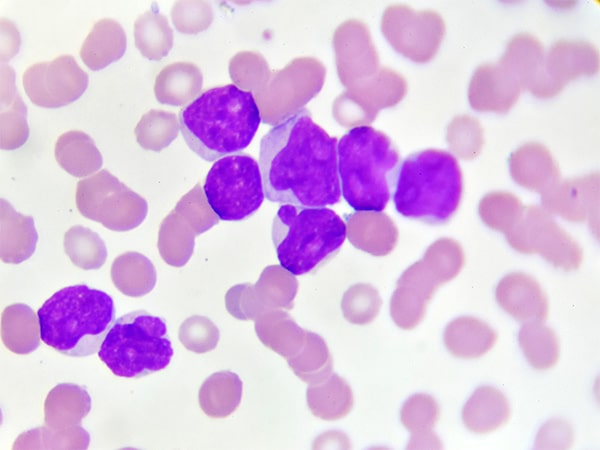Targeting Leukemia in Older Patients
The FDA recently approved two molecularly targeted therapeutics for treating patients newly diagnosed with acute myeloid leukemia (AML) who are 75 or older.

The U.S. Food and Drug Administration recently approved the molecularly targeted therapeutics glasdegib (Daurismo) and venetoclax (Venclexta) for treating patients newly diagnosed with acute myeloid leukemia (AML) who are age 75 or older, or who have chronic health conditions or diseases that prevent them from receiving the standard intensive chemotherapy.
AML is the second most common type of leukemia diagnosed in the United States. In 2018, an estimated 19,520 children and adults living in the U.S. are expected to be diagnosed with this form of cancer and one in three of these people will be 75 or older.
Treatment for AML usually occurs in several phases. In the first phase, patients are treated with chemotherapy to induce remission. In the second phase, they receive additional chemotherapy to sustain the remission. Some patients continue to receive some form of treatment long term to prolong the remission. In some cases, a molecularly targeted therapeutic might be added to the chemotherapy given during the different phases of treatment.
The specific chemotherapeutics used to treat a patient vary depending on several factors, including the patient’s age and whether they have other chronic health conditions or diseases (comorbidities). Glasdegib is a molecularly targeted therapeutic directed against a protein called Smoothened. Smoothened is part of a signaling pathway called the Hedgehog pathway that researchers have implicated in driving AML.
The FDA approved glasdegib for use in combination with a low dose of the chemotherapy agent cytarabine after results from a phase II clinical trial showed that adding the molecularly targeted therapeutic to low-dose cytarabine almost doubled median overall survival for patients newly diagnosed with AML who could not have intensive chemotherapy due to age or comorbidities.
Venetoclax is a molecularly targeted therapeutic directed against the protein BCL-2. BCL-2 is a protein that promotes cell survival by preventing cells from undergoing a natural self-destruct process called apoptosis. Elevated levels of BCL-2 have been seen in several types of leukemia cells, including AML cells and chronic lymphocytic leukemia (CLL) cells. By blocking BCL-2, venetoclax triggers the leukemia cells to die by apoptosis.
The first FDA approval for venetoclax, which occurred in April 2016, was for treating certain patients with CLL.
According to the FDA, the new AML approval is for use of venetoclax in combination with azacitidine, decitabine, or low-dose cytarabine. This approval was based on results from two phase I/II clinical trials that enrolled patients newly diagnosed with AML and who could not have intensive chemotherapy due to age or comorbidities. In one of the trials, 37 percent of patients who received venetoclax and azacitidine had complete remission and 54 percent of patients who received venetoclax and decitabine had complete remission. In the other trial, 21 percent of patients who received venetoclax and low-dose cytarabine had complete remission.
Both FDA approvals were rendered on Nov. 21, 2018.
